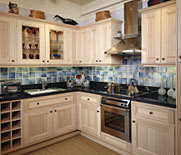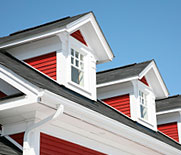7 Tips for Conserving Energy in Your Home
1. Light Bulb Efficiency: Incandescent vs. Fluorescent & LED
Did you know eight 100 watt incandescent bulbs equals one 23 watt fluorescent bulb? Fluorescent bulbs use 6 times less energy than incandescent bulbs. According to the U.S. Department of Energy, replacing incandescent bulbs with fluorescent or LED bulbs can reduce lighting energy by 50% to 75%.
2. Seal Holes: Floors, Walls, Attics, Ceilings
As we all know, warm air rises. When heating our homes we do not realize how much warm air escapes into our attics, allowing cool air from the basement or crawlspace to replace the warm air that was lost. According to The Energy Roadmap, 20%-30% of our warm air escapes to the attic. Sealing holes in your floors, walls, and attics, sealing around pipes, electrical lines, vents, ducts, and attic entrances can help prevent the loss of warm air. Investing in proper insulation and sealing air leaks you can save 10% on heating and cooling needs. Thirty-one percent of warm air is lost through floors, walls, and ceiling holes. Other major locations include ducts, fireplaces, and plumbing penetrations.
3. Ducts: Seal and Insulate
If ducts are located outside conditioned space, there is 20%-40% loss. This loss is equivalent to having three registers blowing costly air outside your house. Also, you can lose up to 60% of heated air before it reaches the register if your ducts are not insulated. Sealing and insulating your heat ducts, return ducts, air handlers, register boots, connections between the boots and the floor or wall, and or insulting the entire system will prevent such big losses and will help keep your heating energy cost down.
4. Pumps and Appliances: Pool and Spa
When thinking about which pump to buy for your pool or spa, consider a 2-speed or variable speed pump. These speed pumps are more efficient than single-speed pumps. Including an aesthetically-pleasing cover can save energy by preventing evaporation and heat loss.
5. Appliances: Refrigerator, Dishwasher, Clothes Washer
To cut energy costs consider replacing your refrigerator, dishwasher, and clothes washer with Energy Star products. By replacing your old inefficient refrigerator you can save as much as $280 per year in electricity costs. A new Energy Star dishwasher can save 10 gallons of water and $40 per year. When choosing a new clothes washer, choose a front- loading washer that will reduce water use and spin more water out of the laundry, which will reduce energy use by a dryer. Also consider choosing one with a low water factor.
6. Toilet: Water Usage
If your toilet flow is over 1.6 gallons per flush you should consider installing a 1.28 gallon per flush max or dual-flush toilet. When you flush a toilet there is a lot of energy consumed. Water itself is not energy but energy is used to make water available for use. Energy is spent during the processes of pre-use treatment, distribution and system pressurization, heating and cooling, and wastewater treatment. You could help save energy by replacing your old toilet with a new energy saving one.
7. Furnaces & Ducts: Size and Efficiency
National surveys have concluded that over half of all Heating, Ventilation, and Air Conditioning (HVAC) contractors do not size heating and cooling systems correctly. The most common mistake is over-sizing. More energy is used because of the short run-time cycles which can create discomfort and uneven conditioning throughout your home. Properly sized ducts will prevent stress on the system. Improperly sized ducts can cause fans to work harder which will cause them to fail sooner and use more energy to move air. Energy costs may rise because pressure differentials may cause the conditioned air to be pushed out while pulling in unwanted air.



